


An Adventure Like No Other
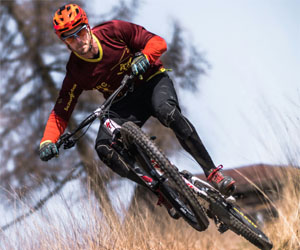
Mountain biking is an exhilarating outdoor sport that takes riders on a thrilling journey through a variety of terrains. While it's true that any form of mountain biking can be an adventure, some riders seek the ultimate rush by tackling challenging and rugged terrains. This pursuit is not for the faint of heart, but it offers an experience like no other for those who dare to conquer it.
Challenging terrain in mountain biking can include everything from steep inclines and rocky paths to tight switchbacks and mud-soaked trails. These elements add a level of complexity and danger to the sport, making it an adrenaline-pumping experience for those who crave adventure.
One of the key attractions of mountain biking through challenging terrain is the constant need for skill and concentration. Riders must be fully engaged in their surroundings, making split-second decisions on how to navigate obstacles. It's a test of physical strength, mental acuity, and technical prowess. The rewards of successfully navigating these difficult paths are not just the satisfaction of conquering them but also the breathtaking views and the sense of accomplishment that comes with it.
For many mountain bikers, conquering challenging terrain is a personal journey of growth and self-discovery. It pushes them to their limits and helps them break through mental barriers. Whether it's mastering a tricky downhill section, clearing a daunting rock garden, or tackling a steep climb, every challenge overcome is a victory and a testament to the rider's determination.
Safety is a paramount concern when mountain biking through challenging terrain. Riders must wear appropriate protective gear, including a helmet, gloves, and body armor. Additionally, a well-maintained mountain bike with sturdy brakes and reliable suspension is essential. It's also a good idea to ride with a buddy or let someone know your planned route in case of emergencies.
In terms of technique, riders should hone their skills on easier trails before attempting the more challenging ones. Proper body positioning, weight distribution, and braking are crucial to maintaining control and safety on steep descents and tricky ascents. Moreover, understanding how to pick the right line through obstacles and using momentum effectively can make a significant difference in successfully navigating challenging terrain.
When it comes to equipment, having the right mountain bike for the job is essential. Bikes designed for challenging terrain are typically equipped with full suspension to absorb shocks, sturdy tires for better traction, and a robust frame built to withstand the rigors of demanding trails. It's worth investing in a bike that's up to the task to ensure a safer and more enjoyable experience.
Mountain biking through challenging terrain is not just a sport; it's an adventure that tests a rider's physical and mental capabilities. It's a journey of personal growth, pushing one's limits, and reaping the rewards of stunning natural beauty. While it's not without risks, with the right preparation and the right mindset, mountain biking through challenging terrain can be an unforgettable experience that will leave riders craving more of the thrill that only this sport can provide. So, gear up, get ready, and embrace the challenge of mountain biking through the rugged and demanding terrain - it's an adventure like no other.
The Foundation Of Every Great Ride
 Surfboards come in various shapes, sizes, and designs, each tailored to specific wave conditions, rider skill levels, and surfing styles. The key elements of surfboard basics include:
Surfboards come in various shapes, sizes, and designs, each tailored to specific wave conditions, rider skill levels, and surfing styles. The key elements of surfboard basics include:
Length: Longer boards are more stable and buoyant, making them suitable for beginners. Shorter boards are more maneuverable and designed for advanced riders.
Width: Wider boards provide better stability, while narrower boards are more responsive and agile.
Thickness: Thicker boards offer more buoyancy, allowing for easier paddling and wave-catching.
Tail Shape: Different tail shapes affect control and turning abilities. Common tail shapes include round, square, squash, and pin tails.
Rocker: The curve from nose to tail influences a board's maneuverability. More rocker enhances turning ability.
Fins: The number, size, and placement of fins on a board significantly affect stability, tracking, and control.

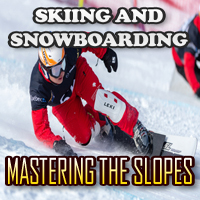
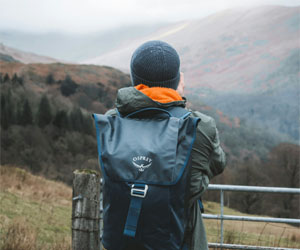


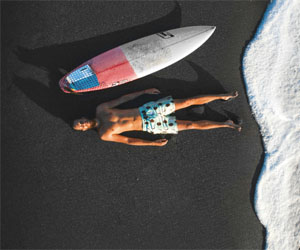


A Thrilling Adventure
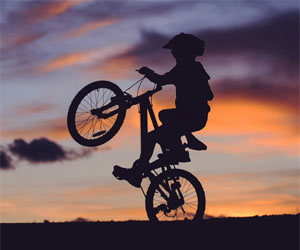 One of the most captivating aspects of conquering trails and terrain on a mountain bike is the ever-changing landscape. Riders can transition from gentle dirt paths to rocky, technical descents, and back again in a matter of minutes. This dynamic experience keeps the adrenaline pumping and the senses heightened, making each ride a unique adventure.
One of the most captivating aspects of conquering trails and terrain on a mountain bike is the ever-changing landscape. Riders can transition from gentle dirt paths to rocky, technical descents, and back again in a matter of minutes. This dynamic experience keeps the adrenaline pumping and the senses heightened, making each ride a unique adventure.
The versatility of mountain biking means that riders can choose trails that match their skill level. Beginners can start with smoother, more straightforward paths, while experienced riders seek out challenging routes with steep inclines, sharp turns, and obstacles to navigate. It's a sport that offers progression, so as riders become more skilled, they can tackle increasingly demanding terrain.
Conquering trails and terrain on a mountain bike is not just about the physical aspect; it's a mental challenge as well. Riders must make quick decisions, read the trail ahead, and adapt to changing conditions. It's a test of focus, determination, and problem-solving skills.
Safety is paramount when exploring these trails, and riders should wear appropriate protective gear, including a helmet, gloves, and body armor. Additionally, it's crucial to maintain the mountain bike in top condition, ensuring the brakes, suspension, and tires are in optimal working order. Many riders also find it helpful to ride with a buddy, enhancing safety and sharing the joy of the adventure.
When it comes to technique, riders should practice proper body positioning, balance, and weight distribution to maintain control on challenging terrain. Learning how to choose the best line through obstacles, use momentum effectively, and execute quick and precise maneuvers can make all the difference in conquering trails successfully.
Nurturing Nature While Exploring
 Sustainable Gear And Practices: Eco-conscious adventurers understand that the gear they choose can have a significant environmental impact. They opt for eco-friendly and sustainable equipment, such as recyclable and biodegradable materials. Additionally, they practice responsible resource management by conserving water, reducing energy consumption, and minimizing waste generation during their journeys.
Sustainable Gear And Practices: Eco-conscious adventurers understand that the gear they choose can have a significant environmental impact. They opt for eco-friendly and sustainable equipment, such as recyclable and biodegradable materials. Additionally, they practice responsible resource management by conserving water, reducing energy consumption, and minimizing waste generation during their journeys.
Low-Impact Camping: Camping is an integral part of wilderness journeys, and eco-conscious adventurers are known for their low-impact camping practices. This involves setting up camp in designated areas, using portable stoves for cooking instead of open fires, and following the "Leave No Trace" camping guidelines to ensure that the natural surroundings remain unspoiled.
Wildlife Observation And Conservation: Eco-conscious wilderness journeys often involve opportunities for wildlife observation. Rather than disrupting the animals they encounter, eco-conscious adventurers approach wildlife with respect and care.
A Journey Of Progress In Skiing And Snowboarding
 The Beginner Stage:
The Beginner Stage:
As a novice, the journey begins with a focus on mastering the fundamental skills. For both skiing and snowboarding, this includes:
1. Equipment Familiarization: You'll become acquainted with your gear, which includes skis, boots, and poles for skiing, or a snowboard and boots for snowboarding. Proper equipment is crucial for safety and performance.
2. Balance And Stance: Finding the right balance and learning how to stand and glide on your equipment is the cornerstone of successful skiing and snowboarding. Beginners often start by practicing on gentle slopes to develop their balance.
3. Turning And Stopping: Learning how to turn and stop effectively is key to controlling your speed and navigating the slopes safely. Novices generally begin with wedge turns in skiing and heel-side edge control in snowboarding.
4. Snowplow And Basic Maneuvers: In the beginner stage, you'll use the snowplow (or "pizza" for skiers) to control your speed and make controlled descents. Snowplow turns and basic maneuvers help you navigate the slopes with confidence.
Intermediate Progression:
As you gain confidence and proficiency, you'll transition to the intermediate stage, where you can explore more challenging terrain and techniques:
1. Parallel Turns: For both skiing and snowboarding, transitioning from wedge or heel-side edge turns to parallel turns is a significant milestone. This allows for smoother and more efficient maneuvering.
The Key To Longevity In Sports
 2. Proper Technique And Form: Training in the correct technique and form is crucial to preventing injuries. Athletes must learn how to execute movements and actions accurately to reduce the risk of injury.
2. Proper Technique And Form: Training in the correct technique and form is crucial to preventing injuries. Athletes must learn how to execute movements and actions accurately to reduce the risk of injury.
3. Warm-Up And Cool-Down: Effective warm-up routines prepare the body for exercise by increasing blood flow and raising body temperature. Cool-downs help the body recover and prevent muscle soreness. Both are vital components of injury prevention.
4. Nutrition And Hydration: Proper nutrition and hydration support overall health and recovery. Athletes should maintain a balanced diet to provide the necessary fuel for the body and stay well-hydrated to perform at their best.
5. Rest And Recovery: Adequate rest and recovery are critical for preventing overuse injuries. Sleep and relaxation are key to allowing the body to repair and regenerate. Overtraining can lead to fatigue and an increased risk of injury.
6. Mental Resilience: Incorporating mental health and resilience training can help athletes cope with the stress and pressure of competition. A strong mental state can also help athletes make better decisions and reduce the risk of impulsive actions that can lead to injuries.
7. Listen To The Body: Athletes must pay attention to their bodies and listen to the signals they provide. Pain, discomfort, or unusual sensations can be indicators of potential injuries. Ignoring these signals can lead to severe problems.
8. Injury Prevention Workshops: Attending injury prevention workshops and classes can provide athletes with specialized techniques and strategies to reduce injury risks in their chosen sport. These workshops are often facilitated by experts and can offer valuable insights.